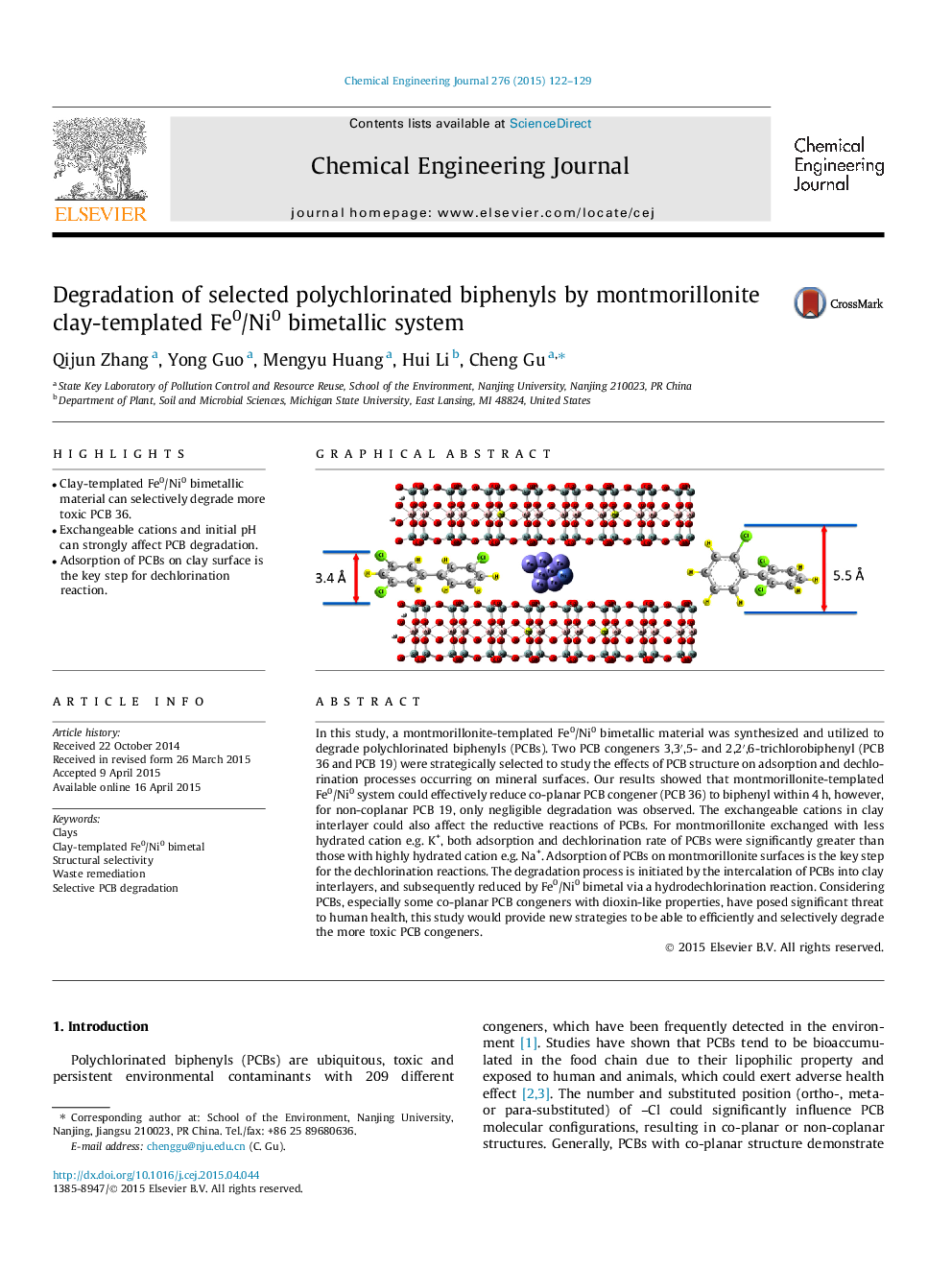| Article ID | Journal | Published Year | Pages | File Type |
|---|---|---|---|---|
| 146221 | Chemical Engineering Journal | 2015 | 8 Pages |
•Clay-templated Fe0/Ni0 bimetallic material can selectively degrade more toxic PCB 36.•Exchangeable cations and initial pH can strongly affect PCB degradation.•Adsorption of PCBs on clay surface is the key step for dechlorination reaction.
In this study, a montmorillonite-templated Fe0/Ni0 bimetallic material was synthesized and utilized to degrade polychlorinated biphenyls (PCBs). Two PCB congeners 3,3′,5- and 2,2′,6-trichlorobiphenyl (PCB 36 and PCB 19) were strategically selected to study the effects of PCB structure on adsorption and dechlorination processes occurring on mineral surfaces. Our results showed that montmorillonite-templated Fe0/Ni0 system could effectively reduce co-planar PCB congener (PCB 36) to biphenyl within 4 h, however, for non-coplanar PCB 19, only negligible degradation was observed. The exchangeable cations in clay interlayer could also affect the reductive reactions of PCBs. For montmorillonite exchanged with less hydrated cation e.g. K+, both adsorption and dechlorination rate of PCBs were significantly greater than those with highly hydrated cation e.g. Na+. Adsorption of PCBs on montmorillonite surfaces is the key step for the dechlorination reactions. The degradation process is initiated by the intercalation of PCBs into clay interlayers, and subsequently reduced by Fe0/Ni0 bimetal via a hydrodechlorination reaction. Considering PCBs, especially some co-planar PCB congeners with dioxin-like properties, have posed significant threat to human health, this study would provide new strategies to be able to efficiently and selectively degrade the more toxic PCB congeners.
Graphical abstractFigure optionsDownload full-size imageDownload as PowerPoint slide
